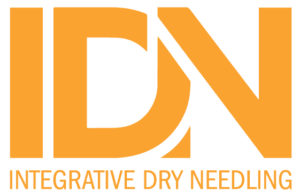Methodological considerations for dry needling trials in medial tibial stress syndrome
J Man Manip Ther. 2025 Dec 2:1-2. doi: 10.1080/10669817.2025.2595629. Online ahead of print. NO ABSTRACT PMID:41328671 | DOI:10.1080/10669817.2025.2595629
Home / My Account / Dry Needling Research
Authors:
Sofía Monti-Ballano, Sergio Márquez-Gonzalvo, María Orosia Lucha-López, Loreto Ferrández-Laliena, Lucía Vicente-Pina, Rocío Sánchez-Rodríguez, Héctor José Tricás-Vidal, José Miguel Tricás-Moreno
J Pers Med. 2024 Mar 22;14(4):332. doi: 10.3390/jpm14040332.
ABSTRACT
Tension-type headache is the most prevalent type of headache and is commonly associated with myofascial pain syndrome and the presence of active myofascial trigger points. This randomized controlled trial aimed to assess the impact of dry needling on the total number of active trigger points, pain intensity, and perceived clinical change in tension-type headache subjects. Thirty-two subjects were randomly assigned to the control and dry needling groups. The presence of active trigger points in 15 head and neck muscles, the headache intensity, and the perceived clinical change were evaluated. A single dry needling technique was administered at each active trigger point across three sessions. Significant differences were observed in the post-treatment measures favouring the dry needling group, including reductions in the headache intensity scores (p = 0.034) and the total number of active trigger points (p = 0.039). Moreover, significant differences in the perception of clinical change were found between the control and treatment groups (p = 0.000). Dry needling demonstrated positive effects in reducing the number of active trigger points and improving the short-term headache intensity in tension-type headache patients. A single dry needling session applied in the cranio-cervical area resulted in a self-perceived improvement compared to the control subjects.
PMID:38672959 | DOI:10.3390/jpm14040332
J Man Manip Ther. 2025 Dec 2:1-2. doi: 10.1080/10669817.2025.2595629. Online ahead of print. NO ABSTRACT PMID:41328671 | DOI:10.1080/10669817.2025.2595629
J Man Manip Ther. 2025 Nov 29:1-10. doi: 10.1080/10669817.2025.2591677. Online ahead of print. ABSTRACT OBJECTIVE: Clinical guidelines recommend combining exercise with other
J Bodyw Mov Ther. 2025 Dec;45:493-501. doi: 10.1016/j.jbmt.2025.08.015. Epub 2025 Aug 31. ABSTRACT OBJECTIVE: Myofascial pain syndrome (MPS) is a chronic musculoskeletal
© Integrative Dry Needling 2025 | All rights reserved | Designed by Weblink
any IDN Course!
*Valid for new registrations only and can not be combined with other discount codes. Offer Expires: 7/7/2024

Not sure which course is right for you? No problem – we created an intuitive process to help!